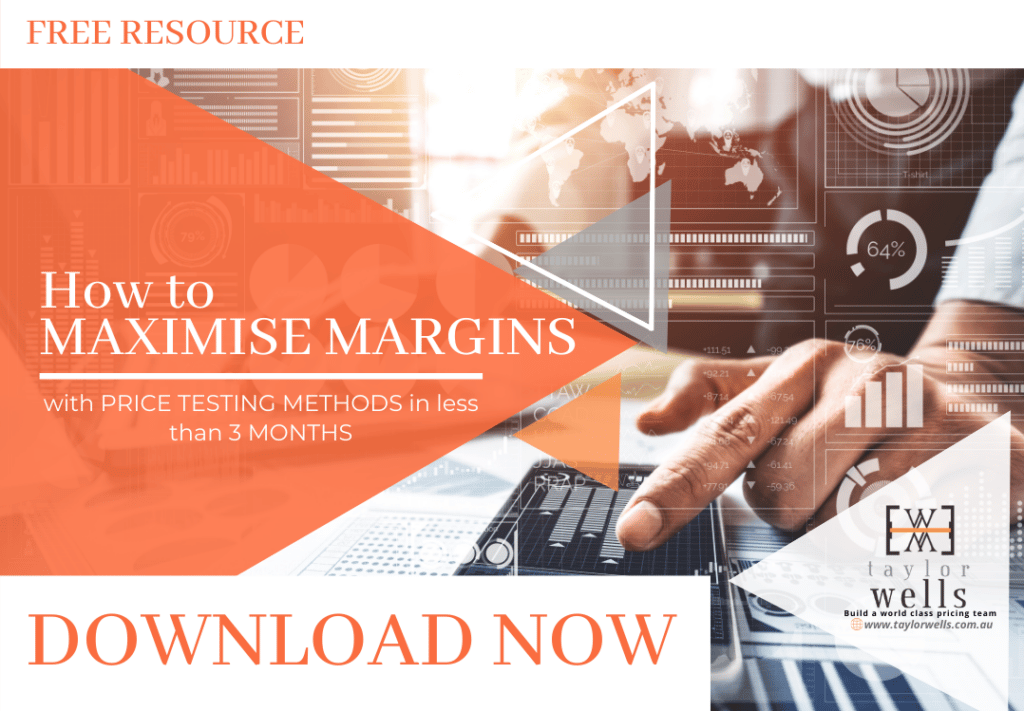
Pricing Intelligence and Analysis For Retailers To Build a Sustainable Business 🈺
What is the importance of pricing intelligence and analysis for retailers?
Price, as part of the marketing mix, has always been the first priority for business leaders and marketing experts. Price products really high, certainly, customers will gladly take their money elsewhere. If you set the price too low, the value of the product will diminish and will ruin the brand image.
>Download Now: Free PDF How to Maximise Margins with Price Trials
Inefficient pricing strategies hugely prevent the ability of a business to become profitable. Undoubtedly, it is not easy to find the sweet spot between filling the bottom line and convincing customers to buy your product.
So how can executives and marketing experts make certain that they are optimising their pricing technique and driving their business towards success in the competitive pricing environment of 2021 and beyond?
Retailers that have found the means to do so are using automated pricing intelligence, coupled with a competitive strategy. One survey revealed that customers noted price as the second important factor in their buying decisions (quality being on top). The study also indicated price as important, across merchandise categories in the form of promotions, preferred retailers, and price comparisons.
Provided with the thought process of this kind of shoppers, as a result, retailers and brands are extremely competitive with their prices. Prices change quickly and the wrong price can hinder the sales of your excellent product or service. Thus, your prices should generate profit and also support your sales. Definitely, it’s not an easy task, which is where pricing intelligence and analysis for retailers enter the picture.
In this article, we will discuss pricing intelligence and analysis for retailers. We will also answer why pricing intelligence and analysis are significant for businesses. Additionally, we will share with you the five main steps of pricing intelligence that can help retailers set themselves up for long-term growth.
By the end of this article, you will gain insights on the importance of pricing intelligence and analysis for retailers. Also, discover how pricing intelligence and analysis can generate more profit, consequently, building a sustainable business.
Table of Contents:
I. Pricing Intelligence and Analysis for Retailers
II. Comparative Price Analysis – Using Data Effectively to Maximise Value
Pricing Intelligence and Analysis for Retailers
Pricing intelligence includes gathering large data about competitor and market pricing and analysing them to understand the market better, therefore, making educated pricing changes and or decisions for your business.
Oftentimes, intelligence is collected using data mining (it can also be done using other automated software solutions) to determine how rivals set their products’ base prices. Yes, some retailers look at base prices for similar products too. But most of the time, retailers dig deeper to find opportunities and weaknesses that they can exploit.
Like for instance, effective price intelligence requires a thorough analysis of competitor behaviour, market position, and fluctuating price to make an overall view of price nuances and methods used by competitors that are selling similar products.
Moreover, price intelligence also applies to price sensitivity, that focuses on patterns on how prices change and its frequency. Price is ever-changing that a major price change can greatly impact the business. For example, Amazon re-evaluates its prices every 10 minutes and modifies them to make sure they have the cheapest products compared to its competitors.
So, why is pricing intelligence and analysis for retailers important?
Firstly, pricing intelligence enables retailers to adjust their own prices, protect the business’s reputation, and increase margins.
Secondly, pricing intelligence lets retailers have competitive advantages, allowing them to gain a bigger share of the market for a particular product or product line.
Finally, price intelligence is vital because retail pricing is a fast-moving and competitive landscape where merely setting a price has a direct impact on the business’ sales and profitability.
Consumers these days are more price-sensitive than ever before. The convenience of comparing prices through smartphones has brought about webrooming and showrooming. Shoppers can check products in-store or online to see if there are better prices from other channels. As a matter of fact, there are a lot of mobile applications specifically designed for price comparisons. Thus, many retailers provide price-match policies just to stay competitive.
Accordingly, the ultimate objective of pricing intelligence is to make sure prices meet a core target of the business consistently. May it be to protect a margin, to be competitive, or to establish a reputation, etc. Pricing intelligence is significant because it helps you attain your goals.
The 5 Main Steps of Pricing Intelligence and Analysis for Retailers
Advancements of technology have changed how customers buy and eventually affected the way retailers sell in e-commerce and brick-and-mortar environments alike. Thus, the development makes the need for advanced comprehensive pricing intelligence inevitable.
Below listed are 5 main steps that can help retailers prepare for long-term growth.
-
Determine Your Competitors
Identifying competitors is the first thing that retailers should do in price intelligence. Not only that but also different intuitive attributes, close/exact product matches, and the response of the audience to the product then regularly monitor their prices.
Competitors vary based on the type of channels (online, in-store, or both) you use to market your products. Know them all. By doing so, you will know how frequent prices are changing for each channel, consequently guide as you identify how often you have to adjust your own prices in order to remain competitive.
-
Create Perceived Value
The next step is to identify how your brand’s pricing tactic will create perceived value in the market.
Perceived value pushes consumers to buy. For example, customers think they’re getting the best deal that’s why they shop at Walmart. Shoppers even come back without the intent to verify prices because of the perceived value.
Building perceived value though is quite difficult and needs analysis of a plethora of data to really understand which option is perfect for the business. Bottom line is, you should know how your target market will respond to your product. Will customers respond better to low-priced items or expensive ones knowing that they will get better quality products at a higher price?
-
Get Pricing Data
Pricing intelligence before was collected manually, but that is no longer the case today. It is much more functional and scalable now because of automation.
After identifying your competitors and creating perceived value, next is to acquire pricing data. Then decide which products you want to monitor. You can record product identifiers like MPN, UPC, brand, to name a few. Then an automated solution will match the provided product information in all rival websites and online marketplaces, showing the prices listed for every SKU. Depending on the solution used, it can also compare to your present price, margin, and also suggested new price, among other information.
-
Analyse the collected data
Your competitors’ prices offer a lot of useful insights for your business. One is, you know your competitors’ prices for each product and see how competitive your prices are.
Moreover, pricing intelligence also focuses on your competitors’ pricing techniques at scale. You will know why they change prices, how often they change prices, and why they think a certain price is the best one for their businesses. Then, you can gather that data and use it as a guide to your own pricing decisions.
-
Use a competitive pricing tool
To manage your pricing intel program, implement a competitive pricing tool because monitoring all of your competitors’ pricing can be demanding. It’s not easy to develop an appropriate pricing intelligence plan. It is tiresome, laborious, and difficult to handle manually.
Implications
- Retailers implementing pricing intelligence needs proper training to analyse data professionally. The wrong analysis can cause sudden big profit losses. Thus, it’s important for retailers to invest in providing proper training to people that are tasked with price intelligence analysis.
- Price intelligence is complex, therefore, any changes made on the basis of price intelligence alone typically carry high risks. On the other hand, a lack of price intelligence and analysis, or simply using a manual approach to price setting provides a much greater risk. It is impossible to collect information needed to develop an advanced price intelligence strategy without using an automated solution to price monitoring.
- Pricing intelligence when utilised properly can help a company generate more revenue. Also, build flexible promotion strategies and tap into new scalability opportunities.
〉〉〉 Get Your FREE Pricing Audit 〉〉〉
Conclusion
Pricing intelligence can help retailers to manage relative price position in the competitive environment. Not only that but also anticipate margin pressures, and improve revenue at the category level.
A smart pricing intelligence tool allows retailers to create a strategy quickly, effectively and accurately. It ensures that they’re continuously able to access actionable information and trends that let them make vital pricing decisions real-time.
Researching the market and being familiar with the most common retail pricing methods using pricing intelligence and analysis for retailers helps businesses stand out among rivals and build sustainable businesses.

Comparative Price Analysis – Using Data Effectively to Maximise Value
Comparative price analysis can produce consistently accurate data to help businesses grow. We’ll be answering key questions such as:
How do businesses set the price for their products? Do they experiment or research what the fair price is? Do they use sufficient data to support their price adjustment decisions? What are the strategies for price analysis?
What is Price Analysis?
Price analysis determines the price of the products and/or services in the product cycle. B2B pricing analytics show how the product, distribution, price, and promos work together to create an effective marketing strategy and product recall.
Price action and volume analysis are both essential in developing a price strategy. This includes a mixture of product lines or strategies for a new product price.
What Is The Difference Between Cost And Price Analysis?
Cost and price analysis are two different thoughts to decide on the appropriate value of products or services prior to purchase. Cost analysis is the projected price based on the subcontract work done on the product. While price analysis is the projected price on the evaluation of the new products in test marketing and placement strategy.
A good example is what business executives use to find trends in the market. They use volume price and price ratio analysis to predict where the market is going.
The volume price trend analysis gives an overview of the machinations of the market in relation to supply and demand. The fluctuations between the supply and demand are the basis in making the right decisions to sell or buy. With the data from the market trends, you can predict where the price is going and act accordingly to increase profits.
Often, price analysis experts and pricing professionals complain about the quality of the data they need to organise before an analysis can be performed. In nearly every case we’ve seen, the data coming out of corporate systems (see blog on pricing software tools) is incomplete, inconsistent, untidy, non-uniform, and requires a methodic approach before it can be studied.
This “data cleanse” is often a necessary evil. But, to achieve the changes you need, it must be done. Similarly, data cleanse has a limited value other than as a means to an end.
We have numerous examples, however, where data enables more than price analysis. It also creates a “viable client value” in its own right. This is particularly pertinent to B2B firms where products or services are purchased by a professional procurement specialist.
The problem here is there are no soft data skills like comprehension of the problems in the commercial sector and people rely more on the decision-makers to describe the data into comprehensible information. The leader must communicate the issues to those involved in analysing all the data.
Without the right expertise, the methods and people who work on the data analysis will fail. More often, price analysts immerse themselves in finding patterns in the data stream. They don’t come up with a solution and become isolated from the everyday company operations. That’s why hiring the right analysts and embedding them to the daily grinds of the business can provide an insight into the problems and will help to improve the company.
Pricing Intelligence and Analysis for Retailers – How to Do it Right
1. Analyse the quality of data
Create comparisons and an estimation of how much data is actually usable. To speed up the process, automation tools are often reliable. Moving forward, continue to constantly update your data.
2. What are your parameters?
Identify your market position in terms of products/services. What does your price history and portfolio look like? How much did you charge for certain items in the past? Compare those numbers to your current price list and with competitors. Then, assess how mature your company is. Do you need to mirror the market price or establish healthy competition through a price war? Do competitors respond and follow your pricing methods?
What does the current market trend look like now and what were the results of your previous price adjustments? Price backtracking should be assessed in the span of at least two years. Then, consider other factors like supply or product availability. Here’s how you can also manage your inventory.
3. Who are your competitors?
Group them into primary, secondary, and tertiary competitors. Your primary competitors have the same target market, products, and services as you. On the other hand, secondary competitors offer similar products for the same buyer category (Uber vs. public transport, or Netflix vs. Youtube). Tertiary competitors have a similar target market as you but they don’t sell the same line of products or services. Although they may eventually become one of your primary competitors in the future.
4. Make the most out of automation and pricing tools.
This provides more accuracy, makes data analysis free from human errors, and creates suggestions on pricing decisions based on massive and complex data. Above all, highlight your pricing strategies and take advantage of price leadership.
5. Optimise your online platform.
If you haven’t taken advantage of digital platforms yet, you’re losing out on potential customer interaction. With 2.14 billion people shopping online, eCommerce and omnichannel platforms must include responsive customer services. Nowadays, most shoppers use social media to raise their concerns and questions. They also rate and review your services/products online. So, here are other ways that you can maximise your digital plan and online presence to draw traffic, engage, and convert them into sales.
6. Maximise the quality of your products/services.
Be innovative and creative through product development and improvement. If you offer a range of premium products, consider varying these with value-added services (i.e. customers can add extra features to your products/services).
Your price is one of the indicators that help set your brand’s position in the market. If you established yours through product leadership, then low prices won’t stay consistent with your position and message. Just take a look at how luxury brands set their prices. Lastly, invest in new technology such as automating your marketing strategies.
7. Optimise your customer relationship management.
To solve customer problems and concerns, you need a trained sales team. They’re often at the frontline of customer interaction, so you want to make sure they deliver the best customer experience. You want to highlight how the relationship you build with them sets you apart from other competitors. That’s why skills like listening, communication, and acting on feedback should all be part of sales coaching.
The ability of a company to handle massive data and use the information is essential for its success. A business can’t survive without this. In fact, less than 1% of company data is actually read and used in decision-making.
- Inculcate the business goals to the analysts and chart their progress. Though the results will take some time, you can expect real information on cost savings, new revenue, improved customer satisfaction, or risk reduction.
- Get the right pricing analysts and assign them to departments that need their expertise. With their knowledge of the daily operations, they provide solutions to improve the company.
- Clearly describe the problem to the analysts without office politics and conflicting agendas. A clear cut description of the problem can provide a simple and effective solution.
- Teach the non-price analysts about proper data analysis. Select the people who work in the daily operations of the company and seek their suggestions while working with the management for better decision-making.
How does the company process the data for B2B pricing analytics? Quite simply, having a chief data officer (CDOs) and data-management functions would be ideal. But without a clear agenda for organising, governing, analysing, and deploying the organization’s information assets, it will fail.
Different Approaches To Pricing Analytics
There are two schools of thought for securing data management:
-
Data defence – used in downsizing risks that include following government regulations on data privacy and financial reports integrity, detecting and eliminating fraud, and preventing theft with detection programs. This also ensures the security of data flow in the company’s system by authenticating sources such as customer and supplier information or sales data in a single source.
-
Data offence – concentrates more on increasing revenue, profitability, and customer satisfaction. It gathers information on customer insights on their products to help in the decision making of the management. It is more focused on activities such as sales and marketing in real-time than data defence.
Achieving Balance – Pricing Intelligence and Analysis for Retailers
Both data offence and defence are crucial to the success of the company. But striking a balance between the two to be effective, depends on standardised or flexible data. Often, analysis of invariable data is for security or government compliance. This is common in health services or insurance. If the data is flexible, it focuses on improving the business.
Take Apple’s comparative price analysis, for instance. The data defence for smart devices is analysed to check if the product is complying with the government’s regulations. If it doesn’t, the government will impose restrictions, hence affecting its price. Similarly, nobody buys the services if the phone’s system gets easily hacked. Thus, security measures are in place in the device. Whereas in data offence, the information regarding the ease of handling is what the user sees in the apps and its price.
We have seen many instances where this approach falls flat because the pricing manager is unable to tell the customer how much they will actually spend over the year (i.e. they can not demonstrate that the total cost of ownership approach is more cost-effective.)
The most common reason for the failure to do this is non-uniform data. Data is actually useful for the financial aspects of long term contracts. But only if it’s accurately calculated and demonstrated.
We have seen companies gain assurance over the likely total spending of customers and use this in sales and marketing. As pricing/cost volatility can be one of the bigger risks when buying a service, a sales pitch that guarantees a cap on the possible price is very appealing. We often see this in how mobile phone plans are priced where customers pay more than they need to cap their spending (i.e. unlimited minutes etc.)
Implications
- B2B pricing analytics are effectively used when massive data is sorted and turned into useful information. The pricing team analyse and find a fair price for the item.
- B2B pricing analytics uses data defence and offence to balance the factors to find the proposed price.
- Pricing teams need all the information from the responses of the consumers and competitors’ price comparisons for analysis.
- Not all pricing teams have the soft data skills needed in the organisation process. They are often too technical and lose focus on why they’re organising data in the first place.
〉〉〉 Get Your FREE Pricing Audit 〉〉〉
Conclusion
- Data gathering need not be a burden just because it’s too massive to tackle. It just needs to have the right program and trained people to sort it all out.
- Comparative price analysis is a group effort for the pricing team. They must contribute to the improvement of the company and explain the business aims to them.
- Start teaching the employees about data analysis so the data flow is easier for management teams.
For a comprehensive view on building a great pricing team to prevent loss in revenue,.
Download a complimentary whitepaper on How to Build Hiring Capability To Get The Best Pricing Team.
Are you a business in need of help to align your pricing strategy, people and operations to deliver an immediate impact on profit?
If so, please call (+61) 2 9000 1115.
You can also email us at team@taylorwells.com.au if you have any further questions.
Make your pricing world-class!
Related Posts
Leave a Reply Cancel reply
Categories
- marketing strategy (26)
- Organisational Design (14)
- Podcast (114)
- Pricing Capability (87)
- Pricing Career Advice (10)
- Pricing Recruitment (19)
- Pricing Strategy (287)
- Pricing Team Skills (13)
- Pricing Teams & Culture (24)
- Pricing Transformation (47)
- Revenue Model (25)
- Sales Effectiveness (27)
- Talent Management (7)
- Technical Pricing Skills (35)







